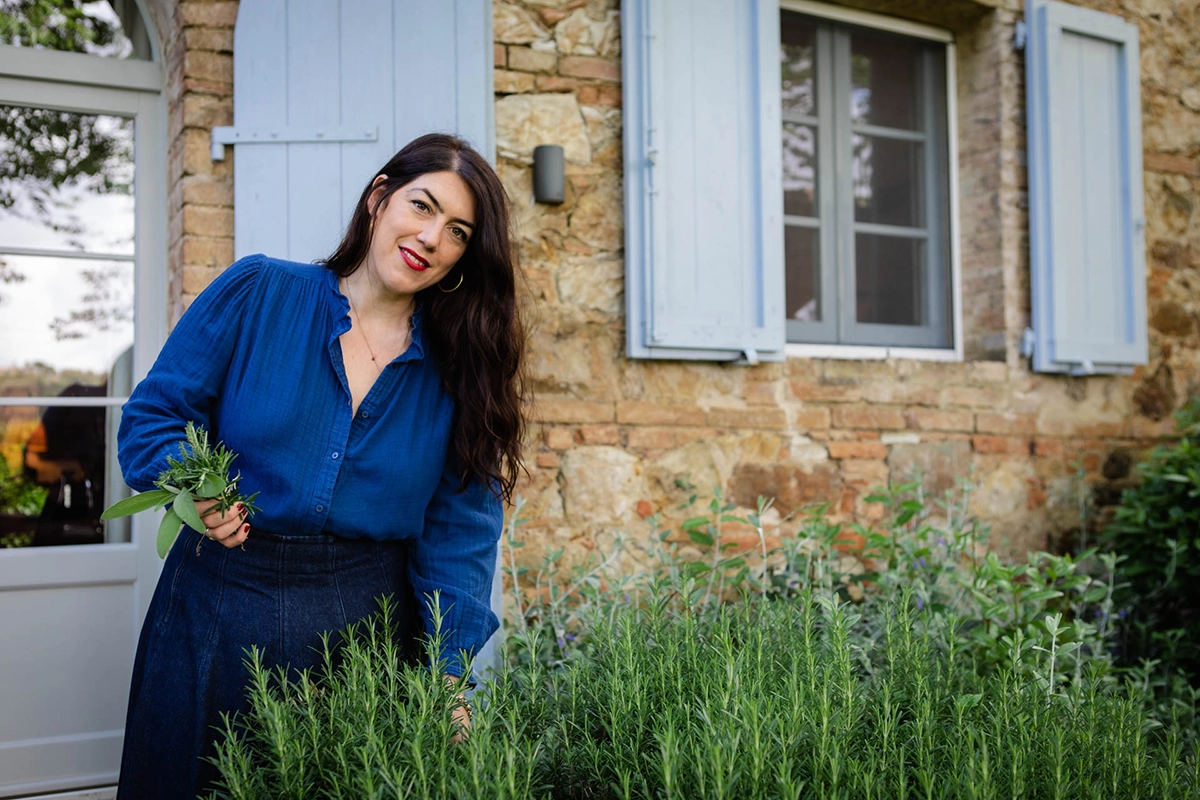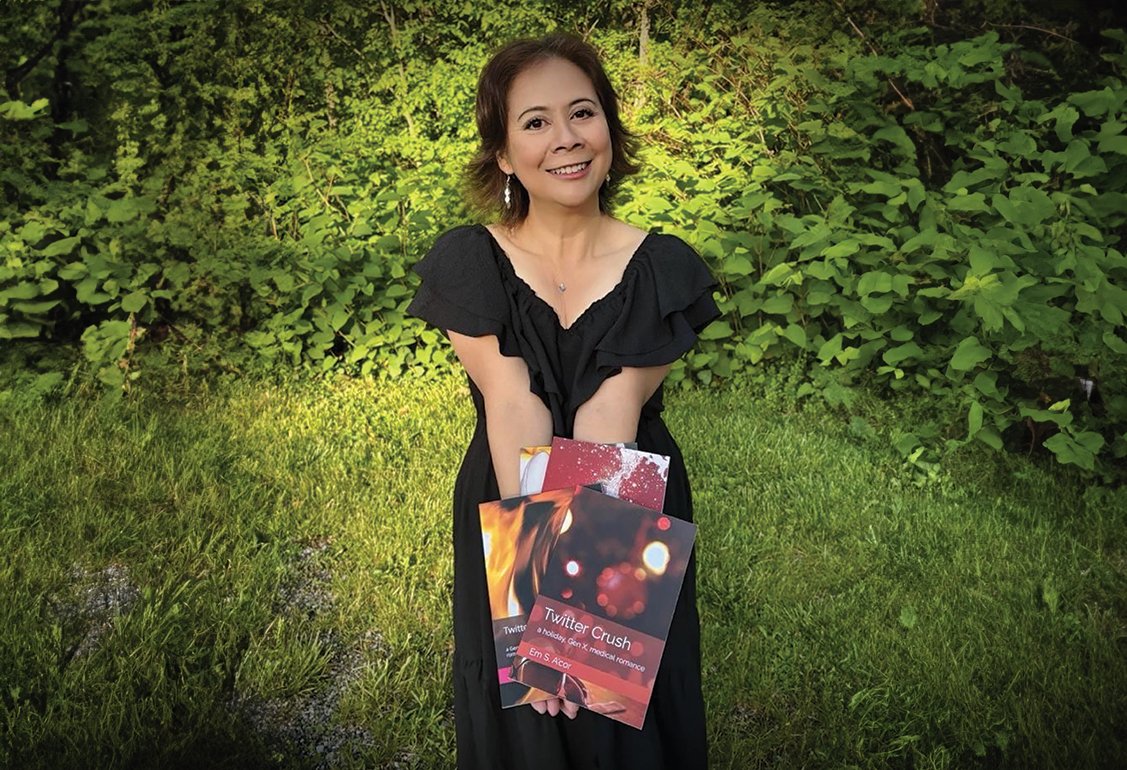Amber Guinness Brings Tuscan Winter Alive Through Recipes, Traditions, and Stories

Photo: Amber Guinness, author of Winter in Tuscany, captures the essence of rustic charm with comforting recipes and stories from her Tuscan home.
Rustic Recipes Infused With Family Traditions
Amber Guinness presents Tuscan winter as a season of beauty, connection, and simplicity, sharing comforting recipes, soulful traditions, and insights from her book Winter in Tuscany that inspire slow living.
Amber Guinness, celebrated author of Winter in Tuscany, invites readers into a world of culinary artistry and rich traditions, where food, culture, and a slower pace of life intertwine. In a recent feature with Taste London, Guinness shares insights into her Tuscan lifestyle, her love for seasonal ingredients, and the philosophy underpinning her new cookbook. Here’s a glimpse into the mind behind the book that is charming food enthusiasts everywhere.
“Quanto Basta”: Cooking with Instinct
The Tuscan approach to cooking revolves around quanto basta, or Q.B., which means “as much as you need.” Guinness describes it as the cornerstone of her love for Italian cooking. This intuitive method empowers home cooks to trust their tastes and instincts rather than adhering to rigid measurements. “It’s an approach that embraces flexibility, encourages creativity, and removes the stress from cooking,” she explains. Whether it’s adding a glug of olive oil or a pinch of salt, she reminds us that good cooking is about tasting and adjusting as we go.
Spaghetti All’Urbriacona and Other Homely Delights
Asked which recipe she’s most proud of, Guinness highlights spaghetti all’ubriacona (drunkard’s spaghetti). This traditional Chianti dish transforms leftover wine into a luscious, violet-tinted sauce, blending seamlessly with pancetta and onion for a bold yet simple flavor profile. “It’s the perfect way to elevate scraps or that half-full bottle of wine sitting on the counter. It’s resourceful and delicious—everything Tuscan cooking represents.”
Amber Guinness masterfully showcases Tuscan charm and culinary heritage, blending storytelling and food beautifully in her heartfelt book, Winter in Tuscany.
Hidden Gems of Tuscany
For Guinness, Tuscany is more than its famous landmarks. She fondly recalls childhood visits to Monte Oliveto Maggiore, a hidden Benedictine monastery in the Crete Senesi region. Known for its frescoes by Signorelli and Sodoma, the monastery also produces exquisite olive oil, saffron, and wine. Guinness’s book includes a recipe for saffron speltotto, inspired by this region’s bold flavours, as well as recommendations for local trattorias, where Tuscan food is celebrated in its purest form.
The Joy of Slow Living
Winter in Tuscany offers an opportunity to truly slow down. For Guinness, the short days invite cozy activities like simmering broth for hours or crafting homemade pasta with her son. “There’s no rush; it’s about savouring the process, whether it’s cooking, sharing a meal, or exploring a treasured corner of Tuscany,” she says. She believes the same principle should guide our travels, urging readers to linger at lesser-known destinations and enjoy long, indulgent meals in rustic trattorias.
Cavolo Nero: A Winter Staple
Of the many Tuscan ingredients, cavolo nero (black cabbage) holds a special place in Guinness’s kitchen. At its peak after the first frost, this dark leafy green is at the heart of winter favorites like ribollita and cavolo nero pesto. In her book, her recipe for cavolo nero pasta with walnuts and pecorino adds both comfort and indulgence to any chilly evening.
Perfect Pairings
Wine features prominently in the Tuscan experience, and Guinness provides thoughtful recommendations for pairing dishes in her book. For example, she suggests a robust Brunello di Montalcino to complement a Bistecca Fiorentina, or a lighter Chianti Classico to balance creamy baked fennel with béchamel. Each pairing emphasizes harmony between the meal and the region’s celebrated wines.
Art and Cooking: An Aesthetic Connection
As both a painter and culinary storyteller, Guinness sees the aesthetic side of cooking as essential. “A beautifully laid table, colorful meals, and balanced flavours all contribute to the joy of eating,” she shares. This commitment to beauty threads through her recipes, combining textures and colors to create dishes as delightful to the eye as they are to the palate.
A Misconception About Tuscan Cuisine
Many think Tuscan cuisine revolves around meat, but Guinness takes pride in debunking this myth. “Tuscan cooking celebrates beans, grains, and vegetables,” she says, pointing to dishes like ribollita or zuppa di farro. More than half the recipes in Winter in Tuscany are vegetarian, showcasing the region’s deep respect for humble, plant-based ingredients.
Culinary Challenges and Triumphs
Perfecting recipes like zuppa di farro (spelt and cannellini bean soup) and polpette al limone (lemony meatballs) required hands-on learning from the original chefs. “These recipes were passed down orally, with no exact measurements,” she recalls. “Observing the nuances—like adding spelt just before serving—helped me replicate the soul of the dishes.”
A Bowl of Comfort
Of all the recipes, Mama’s mini malfatti in broth remains her ultimate winter comfort food. These spinach-and-ricotta dumplings, served in homemade broth, hold sentimental value for Guinness. “Taking the time to make broth is an act of love,” she says. “There’s something heartwarming about the patience and effort involved in creating such a simple, nourishing meal.”
Wrapping It All Up
Amber Guinness’s Winter in Tuscany is more than a cookbook; it’s an invitation to slow down, savour simple yet exquisite flavours, and embrace the joy of creating. Through her stories, recipes, and passion for Tuscan culture, she brings to life the wonder of winter in this iconic region. Whether you’re a seasoned cook or a culinary dreamer, this book will leave you inspired to celebrate both food and the moments shared around the table.












